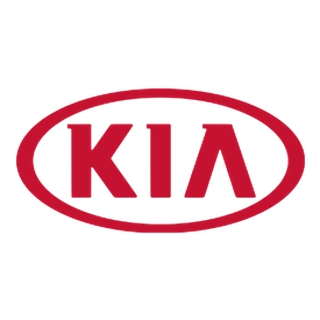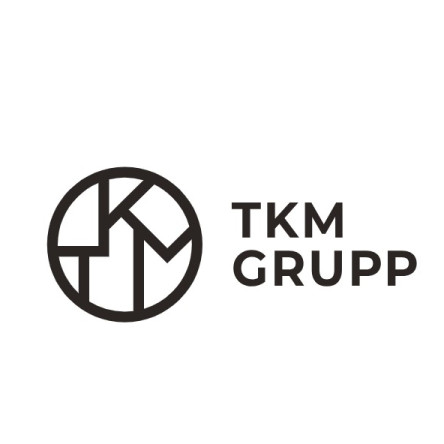KIA AUTO AS
Activity history
Company management, team and contacts
KIA AUTO AS current status
This company's branding has already reached 3,704 peopleand his is followed by 75 Storybook users.On average, the company has been rated 4.7 points.and commented 199 times.
's activity report 2022
KIA Auto AS's activity is the KIA dealership right and wholesale in the Baltics.
2022 was another successful year for KIA Auto AS. Both turnover and profit records were set. Throughout the year, the demand for cars exceeded the factory's production capacity, significantly reducing pressure on sales margins. The profitability was also boosted by the increased importance of more expensive models in sales. The model range was supplemented by the electric e-Niro and the electric KIA flagship
EV6 GT.
In 2022, a total of 4117 vehicles were sold to dealers (2021: 4220 units). KIA Auto AS's sales revenue for 2022 was 92,204 thousand euros (2021: 82,546 thousand euros), an increase of 11.7% compared to 2021, of which vehicle sales accounted for 92.0% (2021: 93.0%), spare parts sales 8.0% (2021: 7.0%).
By country, new car sales increased in Latvia by 13.6%, while sales decreased in Estonia and Lithuania by 9.1% and 18.7% respectively. KIA's market share
in the Baltics in 2022 was 6.4% (2021: 6.0%). In Estonia, KIA sales decreased by 12%, while in Lithuania and Latvia they increased by 4.9% and 5.4% respectively.
A total of 827 new KIA passenger cars were registered in Latvia in 2022 (2021: 785 units), in Estonia 1,636 units (2021: 1,867 units) and in Lithuania 1,522 units (2021: 1,451 units). The total number of KIA model registrations in the Baltics decreased by 2.9%. The most sold KIA
models were Sportage, followed by KIA Ceed and KIA Niro. Electric vehicles sold in 2022 totaled 116 units.
Among car brands, KIA holds the third place in Estonia with a market share of 8.0%, the sixth place in Latvia with a market share of 5.0% and the fourth place in Lithuania with a market share of 6.0%.
As of 31.12.2022, there were 24 official KIA dealers in the Baltics (2021: 24 dealers).
In 2022, the company employed 12 employees (2021: 11 employees).
According to available data from the Statistical Office at the time of preparing the report, as a result of rapid price increases, the Estonian economy fell by 2.4% in the third quarter of 2022. According to the Statistical Office, the strongest positive contribution to the economy in the third quarter came from professional, scientific and technical activities. The most negative contribution came from agriculture and energy and real estate activities. Wholesale and retail trade also had a slowing effect on the economy. According to the Bank of Estonia, the economy will grow mainly on the back of increasing government sector spending to 0.4% in 2023. In 2022, the consumer price index rose by 19.4% compared to the 2021 average due to the explosive rise in energy prices. The Bank of Estonia predicts a price increase of 9.3% for 2023.
The total volume of retail sales in Estonia increased by 18.0% in 2022 according to data from the Statistical Office at current prices. The wholesale and retail sale and repair of motor vehicles and motorcycles increased by 17.2% over the year. According to AMTEL, a total of 20,426 new passenger cars were sold in Estonia in 2022, 8.6% less than in 2021. However, in the last three months of the reporting year, new passenger car sales increased by 11.6% mainly due to improved car availability. Consumer confidence in Estonia has been exceptionally low in the second half of 2022. According to the Bank of Estonia, the third quarter of 2021 saw a payout of more than one billion euros from the second pillar of the pension, which allowed customers to spend more. This also set a high benchmark that consumers currently lack the strength to exceed.
The company's business activities show seasonal fluctuations. Traditionally, the largest sales revenue in car retail sales is in the second quarter and the smallest in the last quarter. In 2022, the fluctuations were mainly related to car availability, i.e. factory production capacity.
The reason for this situation is the ongoing instability of component supplies for manufacturers. Relief for the situation is expected in the second half of 2023.
There were no significant environmental and social impacts associated with the company's business activities.
The company's operations may involve various financial risks, the most significant of which are liquidity risk, credit risk and market risk (including exchange rate risk and interest rate risk). Financial risk management is within the competence of the company's management and includes risk identification, measurement and control of mitigation measures. The aim of financial risk management is to hedge financial risks and reduce the volatility of financial results. The company follows an internally established risk management strategy in managing financial risks. The company's supervisory board supervises the measures taken by the management to hedge risks.
Liquidity, i.e. the effective guarantee of sufficient financial resources to meet the obligations arising from the company's activities, is ensured by the joint group account of the company's parent company Tallinna Kaubamaja Grupp AS and its subsidiaries, which allows the members of the group account to use the financial resources of the group account within agreed limits .
As of the end of the financial year, the company had free financial resources in the form of cash and bank accounts of 10,488 thousand euros (2021: 5,426 thousand euros). Working capital as of December 31, 2022 was positive 13,793 thousand euros (2021: positive 8,208 thousand euros). In the opinion of the management, the company does not have a liquidity problem.
Credit risk is the risk that the company will incur a financial loss caused by the other party to the financial instrument, as the latter is unable to fulfill its obligations. The company is exposed to credit risks arising from business activities (mainly receivables) and investment activities, including deposits in banks and financial institutions. Due to the specifics of wholesale, the company is not exposed to significant credit risks. As of December 31, 2022, the maximum credit risk is expressed in the amount of receivables of 3,389 thousand euros (2021: 1,318 thousand euros).
Exchange rate risk is the risk that the fair value of financial instruments or cash flows will fluctuate in the future due to exchange rate changes.
As of the end of the reporting period, the company did not have significant financial assets and liabilities fixed in non-euro currencies.
Interest rate risk is considered such a risk where an increase in the interest rate may significantly affect the profitability of the company's operations due to an increase in interest expenses payable on obligations. The company's interest rate risk mainly arises from long-term floating interest rate loan obligations linked to EURIBOR. The 6-month EURIBOR rose to 2.693% by the end of the reporting year.
KIA AUTO AS contacts
The company's largest partners
Add a new partner
Dropdown
File a complaint
Choose the comment attribute that you think it contains:
You want to report an inappropriate comment.
Are you sure?
Are you sure you want to delete this article?







